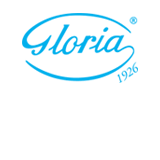Ulcerated hemosiderinic dyschromia and iron deposits within lower limbs treated with a topical application of biological chelator

Submitted: 26 July 2012
Accepted: 26 September 2012
Published: 18 December 2012
Accepted: 26 September 2012
Abstract Views: 2197
PDF: 1211
HTML: 1754
HTML: 1754
Publisher's note
All claims expressed in this article are solely those of the authors and do not necessarily represent those of their affiliated organizations, or those of the publisher, the editors and the reviewers. Any product that may be evaluated in this article or claim that may be made by its manufacturer is not guaranteed or endorsed by the publisher.
All claims expressed in this article are solely those of the authors and do not necessarily represent those of their affiliated organizations, or those of the publisher, the editors and the reviewers. Any product that may be evaluated in this article or claim that may be made by its manufacturer is not guaranteed or endorsed by the publisher.

 https://doi.org/10.4081/vl.2012.e6
https://doi.org/10.4081/vl.2012.e6





